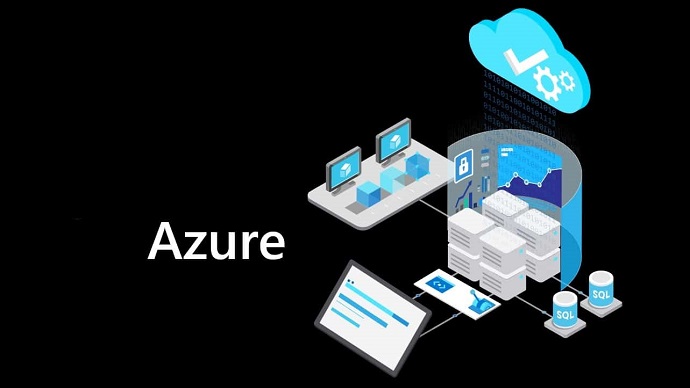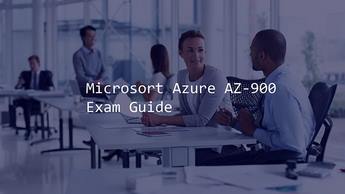Use VCE Exam Simulator to open VCE files

CAPM PMI Practice Test Questions and Exam Dumps
After completing the make-or-buy analysis, which document is used to define the project delivery method?
A. Procurement statement of work (SOW)
B. Procurement strategy
C. Terms of reference
D. Change request
B. Procurement strategy
In project management, especially when dealing with procurement processes, the make-or-buy analysis is an essential step in determining whether the required project deliverables should be developed in-house (make) or purchased from external suppliers (buy). Once this analysis is complete, it’s critical to define the method by which the project will be delivered to ensure alignment with the overall goals and objectives.
The Procurement Strategy outlines the approach for obtaining goods and services required for the project. This document plays a critical role in defining the project delivery method. It encompasses various decisions, such as whether the work will be completed in-house or outsourced, the types of contracts that will be used, and the overall approach to vendor selection and management. The procurement strategy ensures that there is a clear plan for the project’s procurement needs, helping the project manager and stakeholders make informed decisions regarding external vendors and delivery methods.
It covers key details such as:
Procurement process and delivery methods
Vendor engagement
Selection criteria
Contract terms and conditions
Risk management strategies for procurement
A. Procurement Statement of Work (SOW): This document outlines the specific work that is to be performed by a supplier or contractor. It details the deliverables, timelines, and performance expectations for the external parties. However, it doesn’t define the overall project delivery method. The SOW is more specific to the tasks the vendor will perform once the procurement strategy is already decided.
C. Terms of Reference: This document typically defines the purpose, scope, and authority of a specific committee or group within the project. It is not directly related to defining the procurement or project delivery method.
D. Change Request: This document is used when there is a need to formally request a change to the project’s scope, schedule, or budget. While it’s important for managing changes, it does not define the delivery method.
The Procurement Strategy provides the framework for making critical decisions related to procurement, including the project delivery method. It takes into account the insights from the make-or-buy analysis and ensures that the right approach is chosen for delivering the project successfully.
Thus, the correct answer is B. Procurement strategy.
A project is just beginning, and management creates a long list of potential stakeholders. Which statement about identifying and engaging stakeholders is correct?
A. The project manager should identify and deal with stakeholders only during the execution phase.
B. Stakeholder satisfaction should be identified immediately and managed as a project objective.
C. The project manager should focus on project objectives and deal with stakeholders as a secondary priority.
D. Stakeholder satisfaction is the most important goal, and project objectives should be considered a secondary priority.
B. Stakeholder satisfaction should be identified immediately and managed as a project objective.
Stakeholder engagement is one of the most important components of project management, and it must be considered throughout the entire project lifecycle. Identifying, understanding, and managing stakeholders early in the project is critical for ensuring the project’s success. Let’s examine why option B is correct and why the other options are not ideal:
Stakeholder engagement is a continuous process that begins in the initiation phase and continues throughout the project. Stakeholder satisfaction should be considered a key project objective right from the start. Identifying the needs, expectations, and interests of stakeholders early on ensures that their concerns are addressed, and that the project is aligned with both stakeholder expectations and project goals.
Why it's important: Addressing stakeholder expectations early ensures that potential issues or concerns are identified and mitigated early in the project, which can help prevent problems during the execution and closing phases.
This approach increases the chances of project success, as satisfied stakeholders are more likely to support the project and contribute positively to its progress.
This statement is incorrect. Stakeholder management should begin during the project initiation phase, not just during the execution phase. The project manager needs to identify stakeholders early, understand their needs, and engage with them proactively to ensure the project aligns with their expectations throughout the lifecycle.
This statement is also incorrect. While focusing on project objectives is important, stakeholders are the ones who define these objectives, allocate resources, and approve project deliverables. Therefore, stakeholder engagement is crucial and should never be a secondary priority. Effective stakeholder management can help ensure that the project objectives are met successfully.
This statement is somewhat misleading. While stakeholder satisfaction is critical, it should not outweigh the project objectives themselves. Both stakeholder satisfaction and project objectives are equally important, and a successful project requires balancing the needs of stakeholders with the project’s goals and deliverables. Focusing solely on satisfaction without achieving the project’s objectives would lead to an unbalanced and potentially unsuccessful project.
B is the correct answer because it emphasizes the importance of identifying and managing stakeholder satisfaction immediately and treating it as a key project objective. Managing stakeholders effectively from the outset ensures that their needs are met, the project objectives are aligned with their expectations, and the project has a higher chance of success.
Thus, the correct answer is B. Stakeholder satisfaction should be identified immediately and managed as a project objective.
You are working on a project where the management team emphasizes leveraging evolving trends and emerging practices in Project Integration Management. Which of the following is an example of utilizing these trends and practices?
A. Hybrid methodologies
B. Risk register updates
C. Outsourced project resources
D. Reliance on lessons learned documents
A. Hybrid methodologies
Project Integration Management involves coordinating all elements of a project, including aligning project objectives, managing resources, and ensuring that the various aspects of the project work together smoothly. In today’s rapidly changing project management environment, it is important for project managers to stay updated with evolving trends and emerging practices to effectively integrate new methodologies into the project’s management processes.
Hybrid methodologies refer to the blending of traditional project management approaches (like Waterfall) and modern, flexible approaches (like Agile). This trend has emerged due to the increasing need for project management systems that are adaptable to different types of projects and environments. Hybrid methodologies allow teams to take advantage of the structured nature of traditional methodologies while also incorporating the flexibility and adaptability of Agile practices.
Why it's an example of leveraging evolving trends: Many industries now realize that a "one-size-fits-all" approach doesn’t work for every project. Some phases of a project might benefit from a more structured approach (like Waterfall), while other phases might benefit from Agile's iterative process. Combining the strengths of both enables project managers to manage complexity, uncertainty, and changing project demands effectively.
This flexibility helps address emerging practices like iterative development, customer collaboration, and adaptability, which are gaining prominence in modern project environments.
While risk management is important in project management, updating the risk register is a routine activity rather than a reflection of leveraging evolving trends. Risk management is part of best practices, but the act of updating the register itself is not inherently linked to the use of emerging practices or trends.
Outsourcing project resources, although useful in certain contexts, is not a direct example of evolving trends in Project Integration Management. While outsourcing has become a common practice, it does not specifically leverage new methodologies or practices within the field of project integration.
Using lessons learned documents is a standard project management practice but it is not a reflection of leveraging evolving or emerging trends. While learning from past projects is beneficial, it’s a traditional method and not inherently linked to the dynamic, evolving practices that are becoming more prevalent in the project management field.
A. Hybrid methodologies is the best example of leveraging emerging trends and practices in Project Integration Management. This approach helps integrate both traditional and modern methodologies, creating a more adaptive and responsive project management environment. Hybrid methodologies support evolving project demands, making it a significant trend in today’s dynamic project management landscape.
Thus, the correct answer is A. Hybrid methodologies.
A project manager is looking for a method to determine the total amount of money required to finish a project. Which of the following is the most appropriate tool or technique for calculating this total?
A. Earned value management (EVM)
B. Estimate at completion (EAC)
C. Earned value analysis (EVA)
D. Budget at completion (BAC)
B. Estimate at completion (EAC)
To determine how much money is needed to complete a project, a project manager must assess the current performance of the project and predict the total financial resources required for the remaining work. There are various tools and techniques in project management that help the project manager estimate the financial requirements, and each serves a specific purpose in the overall management of the project.
Earned Value Management (EVM) is a comprehensive project management technique used to assess a project's performance in terms of scope, time, and cost. EVM uses three key metrics: Planned Value (PV), Earned Value (EV), and Actual Cost (AC), to analyze project progress. However, EVM itself does not directly give the total money needed to complete the project. It’s a tool for tracking and evaluating the performance of the project to date, rather than predicting the full amount of money required to finish it.
The Estimate at Completion (EAC) is a crucial project management metric used to predict the total cost of the project based on current performance. It is used to forecast the total cost at the end of the project, taking into account the actual costs incurred and the performance to date. The EAC is calculated based on the project's current cost performance and the expected future performance, making it the best option for determining how much money is needed to complete a project.
Formula for EAC:
EAC = Actual Cost (AC) + Estimate to Complete (ETC)
The EAC can also be calculated using various other formulas depending on the project situation (such as using CPI or SPI factors).
The EAC is a dynamic figure that is updated regularly based on the project's ongoing progress and cost performance. This makes it the most appropriate tool for predicting the total funds required to finish the project.
Earned Value Analysis (EVA) is a technique used within the Earned Value Management system. EVA helps track project performance by comparing the actual work completed against the planned work. It is not directly concerned with determining the total funds needed to complete the project, but it helps in understanding the project’s current state and whether corrective actions are necessary.
The Budget at Completion (BAC) refers to the total original budget allocated to a project. While it provides an estimate of the total project budget, it does not account for changes or any adjustments made during the project’s execution. The BAC is fixed, and unlike the EAC, it does not dynamically adjust to reflect the project's current performance or predicted future performance.
To determine how much money is needed to complete a project, the project manager should use Estimate at Completion (EAC), as it takes into account the actual costs incurred and any anticipated costs for the remaining work, providing the most accurate financial forecast for the project's completion.
Therefore, the correct answer is B. Estimate at completion (EAC).
A project manager is in the process of creating the Communications Management Plan for the project. Which of the following groups of inputs is required to begin the creation of the plan?
A. Work performance reports, change requests, and risk register
B. Work performance data, project documents, and stakeholder engagement plan
C. Project charter, project management plan, and project documents
D. Work performance data, stakeholder register, and team management plan
C. Project charter, project management plan, and project documents
The Communications Management Plan outlines how project communication will be structured, managed, and executed. It sets the framework for how information will be communicated between stakeholders, the timing of communication, formats, and methods. To develop this plan effectively, certain inputs are necessary to ensure that the communication channels align with the project's goals, stakeholders' needs, and overall project scope.
Work performance reports: These are generally outputs from monitoring and controlling processes and are used to assess project progress. They are not typically needed as primary inputs to the development of the Communications Management Plan, though they may inform communication during the execution phase.
Change requests: These are related to modifications to the project scope, schedule, or resources and are typically processed later in the project lifecycle. They aren’t direct inputs for the creation of the communications management plan.
Risk register: This document is important for identifying potential risks and their impact, but it does not directly inform the communication strategy or plan itself.
Thus, this group of inputs is not entirely relevant to the creation of the communications management plan.
Work performance data: While relevant during project execution to measure progress, it is not essential for the creation of the communications management plan.
Project documents: While project documents could include information on stakeholders and communication needs, this input is too vague to fully support the creation of a communications plan.
Stakeholder engagement plan: This is indeed a useful input as it identifies stakeholder communication preferences, but it is not the only necessary input to start the creation of the communications management plan.
Project charter: This document outlines the project’s purpose, goals, and high-level communication needs. It helps define the boundaries of communication requirements.
Project management plan: This includes all aspects of project management (scope, schedule, cost, etc.), providing the framework for communication needs within each knowledge area, including stakeholder communication.
Project documents: Various documents such as the stakeholder register, lessons learned, and previous project reports help in understanding the communication preferences and expectations of stakeholders. These documents provide critical information about who needs to receive what information, when, and how.
Together, these inputs are essential for determining how communication will be handled throughout the project lifecycle.
Work performance data: As mentioned earlier, this data is valuable for monitoring project progress, but it is not a key input when creating the Communications Management Plan.
Stakeholder register: While the stakeholder register is an important document for identifying and analyzing stakeholders, it alone is not enough to create a comprehensive communications plan.
Team management plan: While this plan may address how the project team collaborates, it is not a direct input for developing a communications management plan unless the focus is specifically on team communications.
To develop the Communications Management Plan, the most relevant inputs are the Project Charter, Project Management Plan, and Project Documents, as they collectively provide the necessary information about the project scope, goals, stakeholders, and the overall framework for managing project communication.
Thus, the correct answer is C. Project charter, project management plan, and project documents.
A project is currently in progress and is about to transition into a different phase as outlined in the project plan. At this point, the project manager should take the opportunity to:
A. Create the project management plan.
B. Identify the project objectives.
C. Review and update stakeholder engagement.
D. Create the schedule baseline.
C. Review and update stakeholder engagement.
As the project moves from one phase to another, it is essential for the project manager to ensure that the project is still aligned with its objectives and that all stakeholders remain engaged. This transition phase is a crucial point to reassess the project's progress and make any necessary adjustments to improve communication and collaboration.
The project management plan is typically created at the beginning of the project during the initiation and planning phases. It provides the framework for managing the project, outlining how the project’s scope, schedule, cost, quality, and resources will be controlled and monitored.
By the time the project is transitioning into another phase, the project management plan should already be in place. Creating it during this phase would be too late, as it is a foundational document required early in the project.
The project objectives should also be defined during the initial stages of the project, typically during the planning phase when the scope and deliverables are determined. Identifying objectives during a phase transition is not necessary, as the objectives should already be clearly outlined and agreed upon by stakeholders.
Reviewing and updating stakeholder engagement is a key activity during phase transitions. As the project progresses, the interests, influence, and needs of stakeholders can change.
The project manager should review the stakeholder engagement plan to ensure that communication, expectations, and involvement are appropriately managed as the project progresses. This review helps to ensure that any changes in stakeholder priorities are accounted for and that the necessary level of engagement is maintained or adjusted as needed for the upcoming phase.
This is an excellent opportunity to assess how effectively stakeholders have been engaged in the current phase and to make adjustments in the way communication or participation will occur in the next phase.
The schedule baseline should also be created early in the project, typically during the planning phase after the detailed schedule is developed. The schedule baseline serves as a reference for monitoring project performance and assessing any deviations in project progress.
Creating the schedule baseline during the phase transition would be too late, as it should have been set earlier when the project’s timeline was first established.
The transition between project phases provides an opportunity to review and update stakeholder engagement. This ensures that communication strategies, stakeholder expectations, and involvement remain aligned as the project progresses into the next phase. Regularly updating the stakeholder engagement plan is crucial for ensuring the project continues to meet stakeholder needs and maintain support throughout its lifecycle.
Thus, the correct answer is C. Review and update stakeholder engagement.
A new project has been initiated, and the project manager has identified four key stakeholders (in addition to themselves) and four team members. How many communication channels are available in the project?
A. 8
B. 18
C. 36
D. 40
B. 18
Communication channels in a project are the pathways through which information flows between individuals and groups. The total number of communication channels can be calculated using the formula for determining the number of communication paths in a project:
Number of communication channels=n(n−1)2\text{Number of communication channels} = \frac{n(n-1)}{2}Number of communication channels=2n(n−1)
Where n is the total number of participants involved in the project (including the project manager, stakeholders, and team members).
Identify the total number of people in the project:
The project manager counts as one individual.
The four main stakeholders add 4 more individuals.
The four team members contribute an additional 4 individuals.
Therefore, the total number of people is:
1(project manager)+4(stakeholders)+4(team members)=9 individuals1 (\text{project manager}) + 4 (\text{stakeholders}) + 4 (\text{team members}) = 9 \text{ individuals}1(project manager)+4(stakeholders)+4(team members)=9 individuals
Apply the formula to calculate the communication channels:
Number of communication channels=9(9−1)2=9×82=36÷2=18\text{Number of communication channels} = \frac{9(9-1)}{2} = \frac{9 \times 8}{2} = 36 \div 2 = 18Number of communication channels=29(9−1)=29×8=36÷2=18
Thus, there are 18 communication channels available in this scenario.
Understanding the number of communication channels is crucial for managing communication efficiently in a project. As the number of stakeholders and team members increases, the number of communication channels grows exponentially, which can lead to communication overload if not managed properly. This emphasizes the need for a structured communication plan that minimizes confusion and ensures the right people are receiving the necessary information at the right time.
A. 8: This would be the case if there were only 6 participants (project manager + 5 stakeholders/team members), but in this case, we have 9.
C. 36: This is the correct number of communication channels, calculated using the formula.
D. 40: This would correspond to a scenario with 10 participants, not 9.
The correct number of communication channels in this scenario is 18, as calculated using the formula for determining communication paths between participants. The answer is B. 18.
A project manager is preparing for a meeting with three key stakeholders on a new project. Which tools and techniques can the project manager use to effectively capture and maintain stakeholder interest during the meeting?
A. Review stakeholder register and meeting
B. Data analysis and communication skills
C. Data gathering and data analysis
D. Communication skills and cultural awareness
D. Communication skills and cultural awareness
In project management, effectively capturing and maintaining stakeholder interest is essential for project success. Stakeholders are crucial to the project's development, so it is important that the project manager engages them effectively, ensuring their needs and concerns are addressed throughout the project lifecycle. The project manager can use several tools and techniques to engage stakeholders during meetings.
Communication Skills: The ability to communicate effectively is one of the most important tools a project manager can use to capture and maintain stakeholder interest. Communication skills are vital for clearly conveying information, explaining technical details in an understandable manner, and fostering positive relationships with stakeholders. This includes verbal communication, active listening, and the ability to tailor the message to the audience. Effective communication ensures that stakeholders feel informed and involved in the decision-making process, which is key to maintaining their interest.
Cultural Awareness: Understanding the cultural background and values of stakeholders is equally important. Cultural awareness allows the project manager to adapt communication styles, address concerns, and understand differing perspectives. This is particularly important when working with a diverse group of stakeholders or when dealing with international projects. Recognizing and respecting cultural differences fosters a collaborative environment, builds trust, and prevents misunderstandings, ensuring the stakeholder’s continued engagement and interest in the project.
A. Review stakeholder register and meeting:
While reviewing the stakeholder register is important for understanding who the stakeholders are and their interests, this tool doesn't actively engage stakeholders in the meeting itself. It helps in identifying the stakeholders, but it doesn't provide techniques for capturing their interest during discussions.
B. Data analysis and communication skills:
Data analysis is an important tool for decision-making and tracking project progress, but it does not directly address how to engage stakeholders. Communication skills, on the other hand, are crucial for engaging stakeholders, making this answer partially correct but incomplete.
C. Data gathering and data analysis:
These tools are more about collecting and analyzing information related to the project’s progress or the stakeholders’ feedback. While useful, they don't directly address the personal engagement and interest-capturing aspects needed in meetings.
To effectively engage stakeholders and capture their interest during meetings, a project manager must employ communication skills and cultural awareness. These tools and techniques ensure that stakeholders are not only kept informed but also feel respected, understood, and involved in the project's decision-making process. Therefore, the correct answer is D. Communication skills and cultural awareness.
In project management, certain processes are associated with managing the schedule of a project. Which three processes are specifically related to Project Schedule Management?
A. Define Activities
B. Plan Resource Management
C. Estimate Activity Durations
D. Develop Schedule
E. Acquire Resources
A. Define Activities
C. Estimate Activity Durations
D. Develop Schedule
Project Schedule Management is a critical aspect of project management that focuses on ensuring that the project is completed on time. The processes under this knowledge area help plan, estimate, and control the schedule throughout the project lifecycle. Let's break down the three processes associated with Project Schedule Management:
This process involves identifying and documenting the specific actions to be performed to produce the project deliverables. It is a key step in the schedule management process, as activities need to be clearly defined to create a realistic schedule. By defining all the activities required, the project manager can determine the scope of work that needs to be accomplished to meet the project objectives. This process helps in breaking down the project into smaller, manageable pieces.
Once activities have been defined, the next step is to estimate how long each activity will take to complete. This involves considering various factors, such as resource availability, activity complexity, and external dependencies. Accurate duration estimates are essential for creating a reliable schedule, as they provide the foundation for determining start and finish times for each activity. This process relies on historical data, expert judgment, and tools like PERT or Monte Carlo simulations for precise estimation.
After defining activities and estimating durations, the next step is to develop the schedule. This process involves analyzing activity sequences, durations, resource requirements, and constraints to create a project schedule. The schedule outlines when and how each activity will be performed and helps ensure that project deadlines are met. Tools like Gantt charts, Critical Path Method (CPM), and project scheduling software are often used to create the final schedule.
B. Plan Resource Management: This process is part of Resource Management, not Schedule Management. It involves planning how resources will be estimated, acquired, managed, and utilized during the project. While it influences the schedule, it doesn't directly deal with the scheduling of activities.
E. Acquire Resources: Acquiring resources is part of the Procurement and Resource Management processes, and while it impacts schedule development, it is not directly associated with scheduling itself. Acquiring resources typically happens after the schedule is developed and is concerned with ensuring that resources are available to meet the project’s schedule.
The processes associated with Project Schedule Management are Define Activities, Estimate Activity Durations, and Develop Schedule. These processes focus on breaking down the work, estimating time requirements, and creating a project schedule that can be tracked throughout the project's execution to ensure timely delivery. Therefore, the correct answers are A. Define Activities, C. Estimate Activity Durations, and D. Develop Schedule.
In project management, quality management is an essential aspect to ensure that the project deliverables meet the required standards and satisfy stakeholder expectations. Which set of processes are associated with Project Quality Management?
A. Plan Quality Management, Manage Quality, and Control Quality
B. Plan Quality Management, Manage Quality, and Cost of Quality
C. Manage Quality, Customer Satisfaction, and Control Quality
D. Customer Satisfaction, Control Quality, and Continuous Improvement
A. Plan Quality Management, Manage Quality, and Control Quality
Project Quality Management involves ensuring that the project will satisfy the needs for which it was undertaken. The key objective is to meet both the requirements of stakeholders and the agreed standards, which is achieved through systematic processes that are put in place during the project lifecycle.
There are three primary processes that constitute Project Quality Management:
This process involves identifying the quality standards that are relevant to the project and determining how to achieve these standards. The focus is on developing a quality management plan that outlines how quality will be managed and verified throughout the project lifecycle. It also includes defining what constitutes acceptable quality, establishing quality metrics, and identifying roles and responsibilities. Planning for quality ensures that the project is aligned with stakeholder expectations, regulatory requirements, and internal standards from the start.
Manage Quality is focused on translating the quality management plan into actions that can be executed throughout the project. This involves ensuring that the quality standards are being followed during project execution. It includes activities such as quality assurance, process improvements, and ensuring that the work is being performed as per the quality standards. This process helps ensure that project work is being done correctly the first time and addresses issues before they impact the project outcome. Techniques such as audits, process analysis, and continuous improvement are used in this phase.
This process involves monitoring and measuring project results to ensure that the deliverables meet the required quality standards. It is an ongoing process that occurs throughout the project lifecycle, and it is focused on identifying defects or deviations and taking corrective action when necessary. Control Quality includes activities such as inspections, testing, reviews, and validation to ensure that the project’s outputs meet the established quality criteria and stakeholder expectations.
B. Plan Quality Management, Manage Quality, and Cost of Quality: The "Cost of Quality" is an important concept that helps to understand the cost impact of achieving quality versus the cost of failing to meet quality standards. However, it is not a separate process in Project Quality Management. Instead, the processes are focused on ensuring that the quality standards are defined, maintained, and controlled.
C. Manage Quality, Customer Satisfaction, and Control Quality: While customer satisfaction is crucial to the overall success of a project, it is not explicitly a process within Project Quality Management. Customer satisfaction is a broader project objective that is influenced by the successful execution of Manage Quality and Control Quality processes.
D. Customer Satisfaction, Control Quality, and Continuous Improvement: While continuous improvement is an important concept in quality management, it is not considered a separate process. It is embedded within Manage Quality and Control Quality. Customer satisfaction is part of the project’s outcome, but not directly defined as a process under Project Quality Management.
The processes associated with Project Quality Management are Plan Quality Management, Manage Quality, and Control Quality. These three processes work together to ensure that the project delivers outputs that meet or exceed stakeholder expectations and meet the agreed-upon quality standards. Therefore, the correct answer is A. Plan Quality Management, Manage Quality, and Control Quality.
Related Exams

Top Training Courses











SPECIAL OFFER: GET 10% OFF
This is ONE TIME OFFER

A confirmation link will be sent to this email address to verify your login. *We value your privacy. We will not rent or sell your email address.
Download Free Demo of VCE Exam Simulator
Experience Avanset VCE Exam Simulator for yourself.
Simply submit your e-mail address below to get started with our interactive software demo of your free trial.